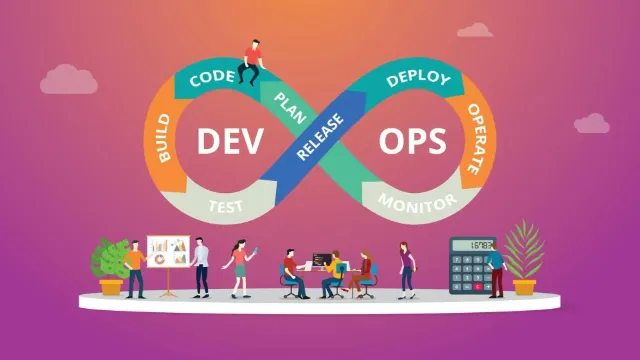The Ultimate Guidelines For Software Testing

Generally, SDLC and STLC processes are followed in a software development project. And in the case of tight deadlines, the development and testing of the software product is done under tremendous pressure. Moreover, different companies and project management held different kinds of testing processes, and it is expected from the tester to get along with them efficiently. But it’s hard getting around different kinds of testing techniques and methodologies, especially with all the technological trends popping up right and left.
Nonetheless, the responsibilities of a tester or a software testing company remain the same – to detect bugs and other issues in the software application and eliminate them before the launch by implementing the industry. To accomplish the common goal of deploying a high-quality product, testers, and QA analysts have to adhere to software testing guidelines and implement best quality assurance practices.
Therefore, in this article, we are going to discuss some of the guidelines that are accepted and implemented all over the industry for testing software products and improving their quality.
General Guidelines for software testing
Testing is important because it can help you ensure that the product you are developing or have developed is of high quality and can meet the expectations of the users. Some of the basic rules or general guidelines for software testing are as mentioned below:
1. Identify which feature, functionality and product require testing. Then clearly identify your goals for software testing. Remember that they must be easily measurable. Also, determine the parameters that can indicate whether the product has failed the test or passed it.
2. Write comprehensive test cases. Creating a set of such test cases can cover all possible scenarios including negative test cases and edge cases.
3. Create test data. Test data would represent different types of expected and unexpected data that your software might run into under a normal operation.
4. If it is possible, automate all your tests. This will help eliminate all human errors which would result in increased efficiency of the testing process.
5. Implement multiple software testing techniques. Providing comprehensive test coverage is necessary for effective software testing. This can be achieved by combining different types of testing techniques like system testing, unit testing, acceptance testing and integration testing.
6. The development process must be test-driven. When you adopt this kind of approach, the tests are written even before the codes are just based on the requirements and expectations of the end users. So, when the code is written, the programmer will be focused on writing code that could pass the test. Hence, meet the expectations or requirements. This approach is also helpful in code refactoring.
7. Developers keep detailed records of their development process. The testing team must also document their testing process. You have to keep a detailed record of your testing process including the requirements or expectations of the end users, test cases, data and the results of the test. This could come in handy for debugging the code and maintaining the software.
8. The testing team should also test and monitor the software continuously during development as well as after deployment. This is to ensure that the features and functionality of the software are working up to expectations.
9. The easiest and most effective way to make sure that your software meets the expectations of the end-users is to involve them in the testing process.
10. To organize and automate the entire testing process, you can use a variety of testing frameworks available in the market. But remember to pick the most suitable and reliable ones.
Also Read: How Does Queue Management Software Help Keep Your Business Organized?
Guidelines for improving software quality
Software testing isn’t just about verifying whether software can fulfill the requirements or not. It is also about weeding out the defects of the product and enhancing the overall quality of the software. Guidelines to produce top-notch quality software are as mentioned below
1. The testing team must conduct tests that are aimed to unearth the defects of the software, find bugs and viruses in its code and do anything else that shows the product is deviating even a little from its Software requirement Specification or desired output.
2. Software testing must be also focused on verifying the reliability and performance of the software to enhance its overall quality.
3. In a traditional software development model, testing was allotted a single phase where it is performed only once throughout the entire SDLC. That too is often done by development teams. If you truly aim to deploy software with top-notch quality then you should take a different approach for software testing.
4. Make your software more efficient by involving a test team in the entire process right from the requirements stage to the deployment stage of the SDLC.
5. The testing team must perform both kinds of tests; black box or functional testing and white box or structural testing.
6. Functional testing is held to verify whether the software is performing as expected, i.e. the expectations of performing certain series of actions to produce or deliver specific output. And in structural testing, the internal logic of the software system is tested.
7. Software generally works on some kind of business logic to provide the solution. Therefore it is recommended to the testing team that they should test all the business logic included in the software and ensure that the logic is implemented correctly and are capable of offering desired output.
8. Software testing must be conducted effectively on the product using minimal resources. The test process must be defined well beforehand so that even if there is a variance between the tasks of different testers then it should be minimal too.
Effective software testing can yield risk information which is helpful to the management in taking necessary action to reduce the project and software risks.
Also Read: Choosing the Right Software Development Models for Your Project
Final Words
I hope after reading this article, you have got an idea of what you need to do to conduct efficient software testing. Adhere to these guidelines that are accepted across the entire industry and you can successfully deploy a high-quality software product.






